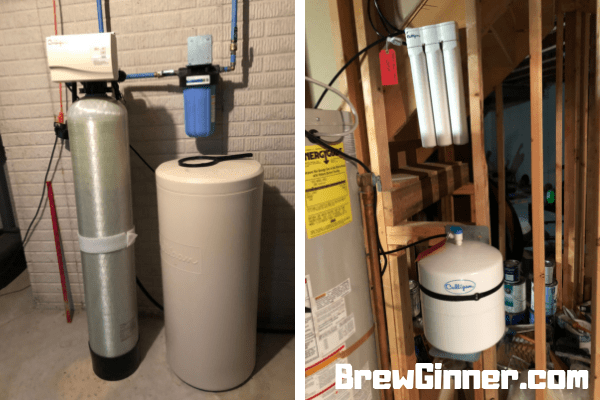If you’re simply curious about the results for a whole house reverse osmosis water profile, skip to the bottom of this article.
When I first started brewing, I read a lot of things about water chemistry. Being I couldn’t stand chemistry class in high-school and college, I decided I really didn’t give a rat’s ass about this topic. After all, I just wanted to brew beer.
I was feeling pretty cocky after doing three extract brews, so I decided to take the next step and try a partial mash recipe. What a disaster that was! My beer tasted like I was drinking liquid grain, and I don’t mean that in a good way. So far that’s been the only brew I’ve had to dump.
So what went wrong? After loads of research, I narrowed it down to my water chemistry (I think).
Water Chemistry (The Abbreviated Version)
To make a long story short, I invested some time in understanding water chemistry and its relation to homebrewing.
There’s lots of information out there related to water chemistry, and adjusting your water profile, so I’m not going to get into that here. If you’re looking for an easy read, take a look at The Beginner’s Guide To Brewing Water Chemistry over at BrewCabin.
What I did discover, was that I needed to put the time and effort into adjusting my water profile before each brew I was making. Given I have a whole house reverse osmosis (RO) system, the logical choice for me was to create my own water profile based on that RO system. It’s like starting with a blank canvas, and creating what you need from that.
RO Water And Brewing
Reverse Osmosis water is basically pure water, very similar to distilled water. RO water goes through a process that strips out all essential ions from the water (at least most of them).
When brewing beer, and using RO water as your source, your can create a water profile to match anything you want using brewing software or a stand alone spreadsheet. You simply input your current water profile, identify your target water profile, and the software identifies what “salts” you need to add to your water to get you to your target water profile.
The starting point is understanding your water profile.
My Reverse Osmosis Water Profile
I’ve been using a spreadsheet called Bru N Water, created by a gentlemen by the name of Martin Brungard. To say Martin is an expert on water would be an understatement.
As I stated above, you need understand your current water profile for this spreadsheet to be effective. Not sure what your water profile is? Simply send a water sample off to Ward Labs, and they’ll email you the results within 24 hours of receiving your sample.
So that’s exactly what I did. A few day’s after I sent in my RO water sample, I had an email telling me exactly what was in my water.
So if you’ve been doing a search on “reverse osmosis water profile” hoping to find the makeup of an RO water system that you could copy, I’ve got you covered. Keep in mind every system is a bit different, but my reverse osmosis water profile should get you in the ballpark.
My water system is fairly standard. I’m on a well, so I’ve got a whole house filter, which feeds into a Culligan Water Softener, and then finally to a reverse osmosis system.

Click on the following link to view my RO Water Profile from Ward Labs. Feel free to use these numbers in your brewing software of choice.
Cheers…
Hey, Thanks for the RO Water report – I really appreciate it!